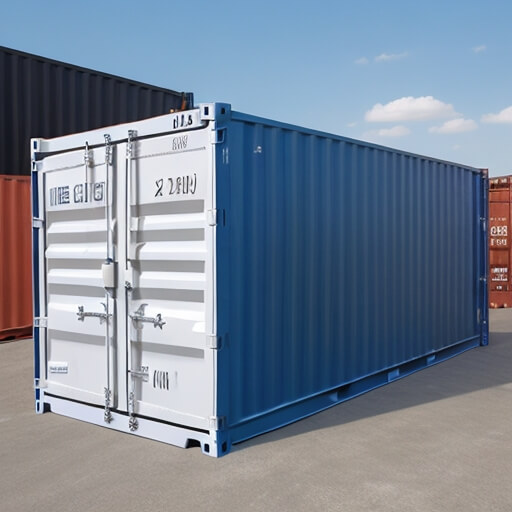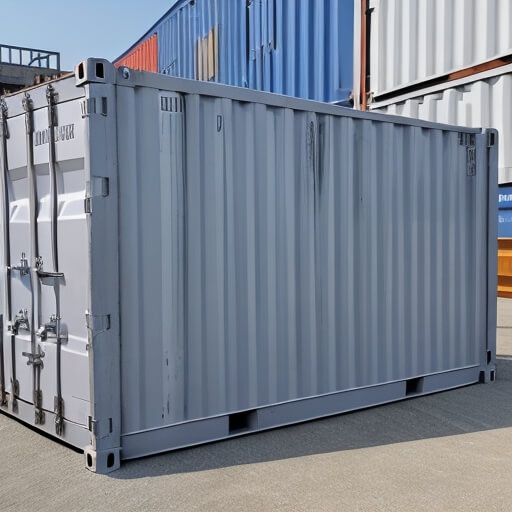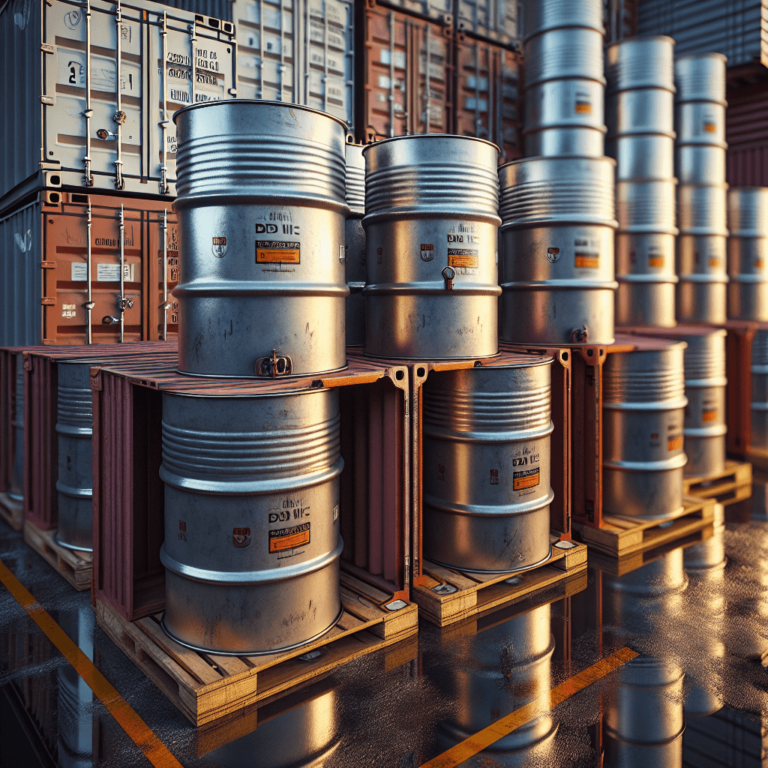Transporting goods globally is a monumental task, and one that relies heavily on an unsung hero of international trade: the humble shipping container. Not only are these containers essential for moving products around the world, but they also come in a myriad of types, each designed with specific materials, goods, and transportation methods in mind.
Platform Containers

Platform containers serve as robust giants in the shipping industry. These flat racks, devoid of side or end walls, cater to oversized loads and heavy machinery unsuitable for enclosed containers. Designed with reinforced steel frames and wooden flooring, they offer reliable support for bulky items such as construction equipment. Their open structure ensures flexibility during loading and unloading operations. This versatility makes platform containers indispensable for transporting unconventional cargo that demands a spacious and sturdy solution. These containers contribute significantly to the seamless movement of specialized goods, enhancing efficiency and adaptability in the shipping process.
Tanks
Tank containers, also known as “tanktainers,” play a crucial role in liquid, gas, and powder transportation. These cylindrical vessels, crafted from robust steel or anti-corrosive materials, ensure the safe transit of chemicals, fuels, and foodstuffs. Encased in a rectangular steel frame conforming to standard shipping container dimensions, these tanks are surrounded by a protective layer, enhancing safety during transit. This design facilitates efficient loading, unloading, and stacking, streamlining the logistics of transporting a diverse range of substances. Tank containers stand as indispensable components in the global supply chain, ensuring the secure and reliable movement of various liquids and powders across diverse industries.

Insulated Containers

Insulated containers act as guardians for temperature-sensitive goods like food, beverages, and pharmaceuticals. With a layer of insulating material sandwiched between two walls, these containers effectively preserve the cargo’s temperature during transit. Whether safeguarding chocolate from melting or ensuring pharmaceuticals stay within critical temperature ranges, insulated containers play a crucial role in maintaining product quality. This technology addresses the specific needs of perishable or sensitive products, offering a reliable solution for industries where precise temperature control is essential for preserving the integrity and safety of goods throughout their entire journey.
Dry Containers
Dry containers serve as the backbone of shipping, accommodating various dry goods such as boxes, bags, and pallets. Versatile in different sizes, these containers feature rigid roofs, floors, and walls, providing a secure and dry environment for goods during transportation. Whether traversing high seas or traveling over land, dry containers offer reliable protection against external elements, ensuring the integrity of the cargo throughout its journey. As the most common type in the container fleet, these containers play a fundamental role in global trade, facilitating the efficient and safe transport of a wide range of dry commodities across diverse industries.

Double Door Containers

Double door containers offer an ideal solution for cargo requiring access from both ends. Featuring doors that swing open at each end, these containers provide enhanced accessibility for loading and unloading bulky items or materials that require specific sequencing. Mirroring the dimensions and functionality of dry containers, double door containers include an added feature to optimize efficiency in the transportation process. This design makes them particularly useful for scenarios where versatile access to the cargo is essential, allowing for organized and convenient handling of goods, whether it involves specialized loading requirements or expedited unloading processes.
High Cube Containers
High cube containers, surpassing standard counterparts, stand tall at 9 feet 6 inches, providing an additional foot in height. This extra space is advantageous for accommodating light, voluminous cargo or shipments that demand increased vertical clearance. Particularly favored for transporting light consumer goods, high cube containers are a frequent presence on ships and at ports globally. Their popularity stems from the versatility they offer, addressing the needs of shipments requiring extra height for optimal storage and transportation. As a common sight in maritime and port logistics, these containers contribute significantly to the efficient movement of goods across international trade routes.

Tunnel Containers

Tunnel containers feature doors at both ends, allowing swift loading and unloading from either side. This design accelerates the process significantly, making them ideal for materials requiring rapid unloading or systematic packing for convenient access during transportation. The double-ended accessibility of tunnel containers enhances efficiency, particularly in scenarios where quick turnarounds or organized loading configurations are essential. This container type proves advantageous for industries seeking streamlined logistics, offering a solution that caters to both speed and accessibility in the handling of goods during transport.
Standard Containers
Standard containers, commonly referred to as dry vans, hold global recognition as the most widely used in shipping. These containers come in standardized lengths of 20 or 40 feet, offering versatility for transporting a wide range of dry goods. Their uniform size and shape contribute to exceptional efficiency in stacking and transportation, whether on cargo ships, trucks, or trains. As the backbone of international trade logistics, standard containers facilitate the seamless movement of diverse products, showcasing their paramount role in the interconnected network of global supply chains.

Car Carriers

Car carriers are specialized vehicles designed for transporting cars from manufacturers to markets. Featuring collapsible sides, these carriers securely hold vehicles in place during transit, providing protection against damage. Carriers come in both enclosed and open variants, offering varying levels of protection. Regardless of the design, they serve as efficient means for transporting vehicles over long distances. Whether safeguarding automobiles from the elements in enclosed carriers or providing an open platform for easier loading and unloading, these specialized transporters play a crucial role in the automotive supply chain, ensuring the safe and efficient delivery of vehicles to their destinations.
Swap Bodies
Swap bodies, a European innovation, provide a distinctive combination of flexibility and functionality. Primarily utilized in road and rail transport, these containers feature folding legs, enabling them to stand independently when not carried by a vehicle. Swap bodies streamline the transfer of goods between various modes of transportation, offering a convenient solution for intermodal logistics. Their design enhances efficiency by facilitating seamless transitions between road and rail, making them a practical and versatile choice for transporting goods across different transport networks. The ability to stand independently adds an extra layer of adaptability, contributing to the overall efficiency and effectiveness of goods transportation.

Bulk Containers

Bulk containers are tailored for loose bulk materials like grains, coal, and sand. Designed with hatchways at the top for convenient loading and, in some cases, discharge hatches at the bottom for easy unloading, these containers merge the efficiency of container transport with the convenience of bulk handling. This specialized design ensures the seamless and practical transportation of loose materials, optimizing both loading and unloading processes. The integration of bulk containers in logistics provides an efficient solution for industries dealing with large quantities of granular or loose commodities, striking a balance between the benefits of containerized transport and the requirements of bulk material handling.
Drums
While not traditional shipping containers, drums play a significant role in international shipping. These cylindrical containers, crafted from materials like steel, plastic, or fiber, are commonly employed for transporting liquids and granules. Available in various sizes, drums are highly valued for their convenience in handling. Widely used in shipping, they provide a practical solution for transporting smaller quantities of substances that may not necessitate the use of larger, standardized containers. The versatility and ease of handling make drums a popular choice for industries dealing with liquid or granular goods, contributing to the efficient and secure transport of diverse materials in the international trade landscape.

Closed Top Containers

Closed top containers are fully enclosed on all sides and feature a removable roof, often made of a tarpaulin or hardtop material. This design ensures comprehensive protection for goods while offering flexibility in loading. The removable roof allows for the transportation of materials that may be too heavy or tall to be loaded through the front or back doors. This makes closed top containers particularly suitable for transporting items such as heavy machinery or tall equipment. The combination of secure enclosure and adaptable loading options enhances the versatility of closed top containers, making them a practical choice for transporting a variety of goods with varying size and weight specifications.
The world of shipping containers is diverse and tailored to meet the specific needs of various types of cargo. As global trade continues to expand, the role of these containers grows increasingly important, streamlining the process of moving goods safely and efficiently from point A to point B. Whether you’re an importer, exporter, or simply a curious reader, there’s no denying the incredible impact these steel boxes have made on the world.

